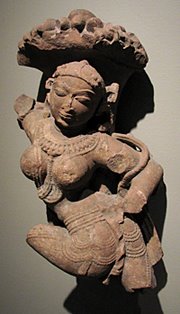A response to Will Buckingham's post, Dragons and Levitating Monks.
The first point about Will's post is that his examples are asymmetrical.
Presumably, the Indian restaurant owner and his wife actually believed the monk could levitate. The example provided by Sagan, an atheist and debunker of irrational belief, was created to demonstrate such beliefs can always be placed beyond the reach of empirical proof. The true parallel of the levitating monk, for Western religions such as Christianity, would be things like belief in the ability of saints to perform miracles, divine intervention by God in medical cases as a result of prayer, possibly even a McCain victory in the upcoming U.S. presidential election (surely a subject of much prayer among a certain segment of U.S. Christians).
The second point is that what these examples illustrate is a wide-spread desire for the miraculous, however that might manifest itself. A significant component of such desires is the validation of religious beliefs. This demonstrates a lack of faith, rather than what one might suppose to be a demonstration of it. Faith, after all, requires no proof.
A final point is that we are surrounded by the miraculous. Our very existence is itself a miracle. It is human nature, I suppose, to become accustomed to what we experience constantly and to lose sight of the wonder plainly manifested to us. As Oscar Wilde expressed it: "The true mystery of the world is the visible, not the invisible."
A deeper, more enriched spirituality is available to anyone who wishes to pursue it by rousing themselves from the illusion that our common, every day experiences are nothing special.
Monday, October 27, 2008
Subscribe to:
Post Comments (Atom)





No comments:
Post a Comment